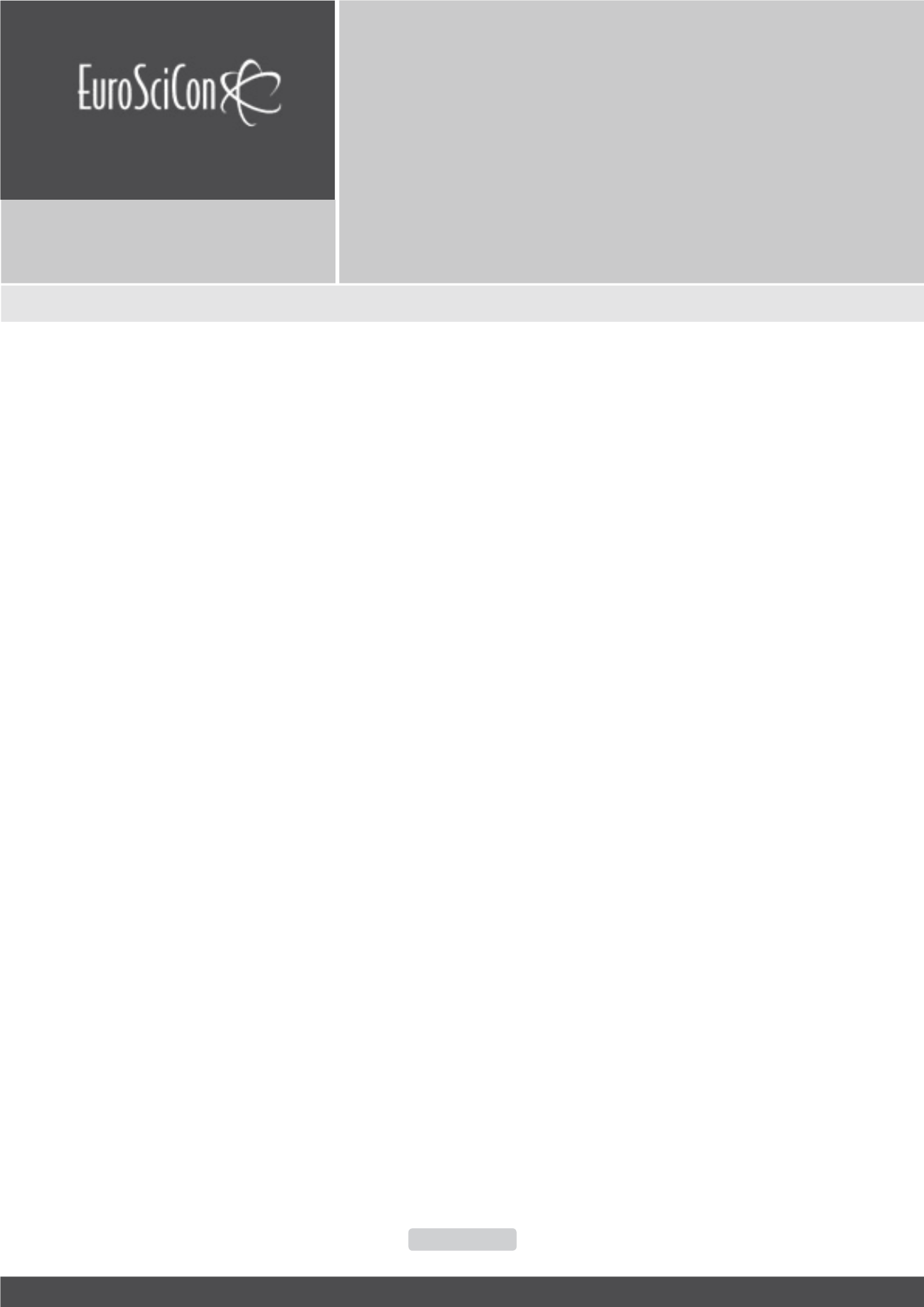

Nanomat 2019
Nano Research & Applications
ISSN: 2471-9838
Page 22
January 28-29, 2019
Barcelona, Spain
18
th
Edition of International Conference on
Emerging Trends in
Materials Science and
Nanotechnology
E
lectrochemical methods for the preparation of high quality
nanostructured surfaces and functionalization through active
biomolecules electrodeposition are highlighted in this work.
There are two applied electrochemical methods in our laboratory
in order to obtain hybrid and nanocomposite structured layers or
advanced functionalization of material surfaces. They are direct
electrochemical synthesis by electro codeposition process and
anodization of materials to controlled growth of nanoporous
oxide films and the second method could be followed by
electrodeposition of hydroxyapatite or organic compounds into
porous films to form more complex hybrid layers. The main goal
of the present paper is to make a summary of results obtained
from applying electrochemical surface modification techniques
in obtaining advanced functional surfaces and their properties
characterization in terms of surface morphology and structure
(SEM-EDX, XRD), the roughness and thickness, corrosion,
tribocorrosion as well as the mechanical properties as nano
hardnessorwearresistance.Electrodepositionofmetalsandalloys
or electro-codeposition of nano andmicrodispersed particleswith
metallicmatrixtoobtainmicroandnanostructuredfilmsandlayers
or hybrid coatings are a bottom-up approach of nanotechnology
methods. Electrochemical oxidation or anodization to obtain thin
films, layers of nano porous oxides, templates for nanowires or
active biomolecules electrodeposition is a top down approach of
nanotechnology method. Electrodeposition and the combination
of electrodeposition with other electrochemical processes as
controlled oxide growth by anodization can lead to a large class
of hybrid layers and composite coatings or nanostructured layers
(films) on different support materials and structures necessary
for a future based on nanotechnology and nanomaterials to
improve the surface functionalization of materials and to face of
aggressive environments and degradation processes. Improving
surface properties for corrosion and tribocorrosion of materials
in specific environments give more valuable industrial and
biomedical applications by increasing their life cycle.
Recent Publications
1. Valentin Marian Dumitraşcu and Lidia Benea (2017)
Improving the corrosion behavior of 6061 aluminum
alloy by controlled anodic formed oxide layer. Revista de
Chimie. 68:77-80.
2. Lidia Benea and Eliza Danaila (2016) Nucleation and
growth mechanism of Ni/TiO2 nanoparticles electro-
codeposition. Journal of The Electrochemical Society
163(13):D655-D662.
3. Benea L, Başa S B, Dănăilă E, Caron N, Raquet O,
Ponthiaux P and Celis J P (2015) Fretting and wear
behaviors of Ni/nano-WC composite coatings in dry and
wet conditions. Materials and Design 65:550–558.
4. Benea L, Dănăilă E and Ponthiaux P (2015) Effect
of titania anodic formation and hydroxyapatite
electrodeposition on electrochemical behaviour of Ti–
6Al–4V alloy under fretting conditions for biomedical
applications. Corrosion Science 91:262–271.
5. Benea L, Mardare-Danaila E and Celis J P (2014)
Increasing the tribological performances of Ti–6Al–4V
alloy by forming a thin nanoporous TiO2 layer and
hydroxyapatite electro deposition under lubricated
conditions. Tribology International 78:168–175.
Biography
Lidia Benea has completed her PhD (Doctor of Science in Chemistry) in
1996 from Dunarea de Jos University of Galati, Romania and Postdoctoral
Studies from Ecole Centrale Paris - France and University Pierre et Marie
Curie Paris - France. She is a University Professor, PhD Supervisor in Materi-
als Engineering, Director of Doctoral School Fundamentals and Engineering
Sciences and Director of Competences Research Center Interfaces - Tribo-
coorosion and Electrochemical Systems. She has published more than 300
papers in reputed journals and has been serving as an editorial board mem-
ber and reviewer of reputed journals and also handled 65 externally funded
project including international and national projects.
Lidia.Benea@ugal.roNanostructuration of biomaterials and materials
by electrochemical methods
Lidia Benea
CC-ITES — Dunarea de Jos University of Galati, Romania
Lidia Benea, Nano Res Appl 2019, Volume 5
DOI: 10.21767/2471-9838-C1-030
















